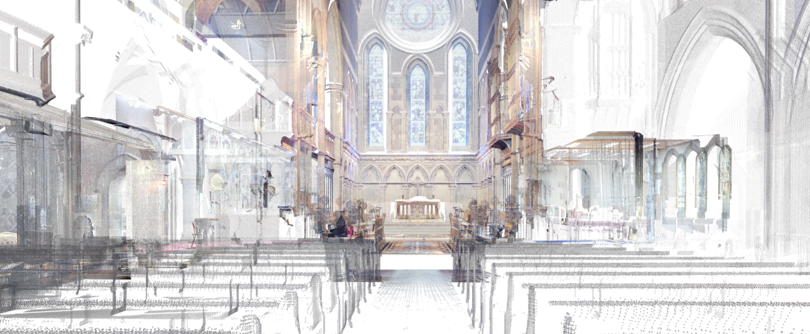Laura O’Connor (She/her)

Irish archaeologist based in Edinburgh, I’m deeply passionate about seamlessly integrating traditional archaeology with innovative tools like virtual and augmented reality to help enrich our understanding of the past.
Projects
Collaborative Work

Legacy of the Lost Fleet: a VRGIS Expedition
The project’s primary goal is to provide an immersive VR exploration where users can virtually navigate the sunken German High Seas Fleet at Scapa Flow, a harbour in the Orkney Islands, Scotland. Following the end of World War I, the German Navy’s High Seas Fleet was interned at Scapa Flow. In an act of defiance, a German commander ordered the scuttling of the entire fleet on June 21, 1919. The scuttling resulted in the loss of 52 ships, making it one of the most significant naval losses in history. Today, the sunken wrecks of these warships lie at the bottom of Scapa Flow, representing a tangible and poignant reminder of the aftermath of World War I.
While VR offers a compelling platform for exploring these shipwrecks, it often lacks real-time and contextually relevant information. By integrating GIS (Geographical Information Systems) data in the VR, the project aims to overcome this limitation by incorporating live geospatial data, such as maps, points of interest, and real-time information, into the virtual world. This approach offers new possibilities for interactive storytelling, data visualisation, and collaborative exploration, ultimately empowering users to have a more informed and engaging VR experience.
Sage of The Stone
Our group project shines a spotlight on the enigmatic Govan hogback stones, extraordinary cultural relics that embody the diverse heritage of Govan, a melting pot of Irish, Viking, and Anglo-Saxon traditions. Leveraging cutting-edge digital documentation techniques, including laser scanning, photogrammetry, and digital storytelling, we have crafted an immersive digital interaction focused on the remarkable Govan 2 hogback stone.
Designed with the user experience in mind, this interactive exhibit invites users to embark on a journey into the captivating world of Scottish folklore and unravel the intriguing tales it conceals. Moreover, our interactive experience explores the evolution of Govan from its early days to the present, showcasing the fascinating progression of this historically rich area.
This project was completed in collaboration with Allison Capello and Adriana Gay.
Heritage AR App
As part of my coursework, I developed a Augmented Reality (AR) application to repurpose published archaeological illustrations. In the past, the primary medium for disseminating information about these sites was through monographs and books. While these traditional publications have provided invaluable insights, they fall short in offering an interactive and immersive exploration experience.
My AR application addresses this gap by transforming static images of archaeological sites into dynamic, 3D models. The app was designed to allow a user to simply point their device at an image from a book or an online source, and my app instantly creates an interactive visualisation of the site. Users can explore the 3D model, gaining a deeper and more engaging understanding of the historical context.
Example used in app was Carn Liath Broch. Image used is from Canmore, illustrating a plan copied from OS ‘495’ card. The original can be found on https://canmore.org.uk/collection/1541765
The 3D model of Carn Liath Broch is by Dr Hugo Anderson-Whymark, available to download from Sketchfab at https://skfb.ly/6xsr8
Saga of the Stone
Our group project looks at the Govan hogback stones, relics left by Vikings. The stones embody the melting pot of Irish, Viking, and Anglo-Saxon traditions at Govan. Utilising laser scanning, photogrammetry, and storytelling, our group crafted an interactive narrative focused on the Govan 2 hogback stone.
We designed the project with user experience in mind and incorporated a text designed for dyslexic readers along with voice overs to coincide with the text based elements beyond the main menu.
This project was completed in collaboration with Allison Capello and Laura O’Connor.














